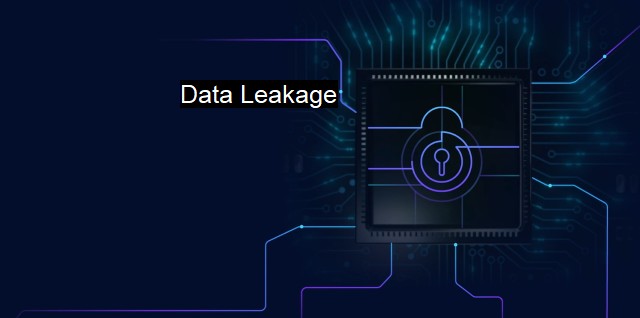What is Data Leakage?
Data Leakage: Causes, Implications, and the Crucial Role of Antivirus Software in Cybersecurity
Data leakage, also commonly referred to as data breach or data exfiltration, is a significant cybersecurity issue affecting millions of individuals and businesses globally. It refers to when unauthorized personnel gain access to internal confidential data and subsequently leak it to external sources, intending to exploit the sensitive information or cause harm. Data leakage can happen both intentionally and inadvertently, hence the need for preventative measures, leading invariably to the increased investment in robust cybersecurity infrastructure and antivirus software.In the broader context of cybersecurity, data leaks represent a significant threat to the integrity of an organization's informational asset base. Cybercriminals often necessitate data leakage to exploit personal sensitive information for illegitimate activities, such as identity theft, financial fraud, and advanced persistent threats. The ever-evolving nature and sophistication of these cyber threats significantly amplify the repercussions of data leakage, causing significant financial and reputational damage to organizations.
An example of data leakage in 2013 was the infamous Yahoo security breach where over three billion user accounts were compromised. The sensitive information that was leaked included real names, email addresses, dates of birth, and telephone numbers. The breach had a devastating effect on Yahoo's market value, underscoring the catastrophic outcomes that data leakage can have on organizations, irrespective of their size and reputation.
Data leakage can occur in various ways, but the common avenues include phishing attacks, malware, insider threats, and poorly configured security systems. Phishing is a deceptive method used by cybercriminals to trick unsuspecting individuals into providing confidential details, usually through emails appearing to come from a trusted source. Malware, short for malicious software, signifies a variety of software types designed to damage, disrupt, or gain unauthorized access to a computer system, thereby enabling an environment for data leakage.
On the other hand, insider threats relate to employees or trusted individuals instrumentalizing their privileged access to an organization's data for illegitimate activities, including data leakage, either knowingly or unknowingly. Poorly configured systems serve as an easy entry point for cybercriminals, rendering organizations with such systems vulnerable to data leaks.
One of the most paramount shields against data leakage is robust cybersecurity and antivirus measures. Antivirus software plays a significant part in protecting devices from various cyber threats, including preventing unauthorized access, detecting and removing malware, and providing real-time security updates.
Equally crucial is undertaking regular system audits to identify inherent vulnerabilities in an organization's cyber infrastructure. This aids in enacting corrective measures timely, thereby minimizing the likelihood of data leakage. Besides, to prevent insider threats, organizations should prioritize limiting the individuals' data access based on responsibilities and enforce stringent data usage and protection norms.
Training employees and stakeholders to identify and respond to phishing attacks and possibly harmful emails is another potential deterrent to data leaks. In parallel, companies must grant and revoke access rights immediately as employments commence or end to prevent unauthorized, potentially malicious access.
Data leakage is a significant cybersecurity threat that advanced firewall mechanisms and antivirus software potentially deter. addressing this menace requires a holistic approach, encompassing consistent system audits, restricting data access, training stakeholders, and staying abreast of evolving cyber threats. Given the significant adverse effects of data leakages, organizations should perceive robust data protection measures not as an optional endeavor but as an integral business operation, just as crucial as generating profits.

Data Leakage FAQs
What is data leakage?
Data leakage is the unauthorized transmission of sensitive information outside an organization's network or boundaries. This can occur through various means, including email, social media, instant messaging, or physical devices like USB drives.What are the consequences of data leakage?
Data leakage can have severe consequences for organizations, including financial loss, reputational damage, litigation, and regulatory fines. It can also compromise confidential information, trade secrets, and intellectual property, leading to competitive disadvantage and loss of trust from customers or partners.How can antivirus software prevent data leakage?
Antivirus software can prevent data leakage by detecting and blocking malware that could steal or exfiltrate data. It can also monitor network traffic, identify suspicious behavior, and alert security teams of potential threats or vulnerabilities. Additionally, antivirus software can enforce policies and access controls to restrict unauthorized data access or sharing.What are some best practices to prevent data leakage?
Some best practices to prevent data leakage include implementing strong passwords, using encryption to protect data in transit and at rest, limiting access to sensitive information, training employees on security awareness, monitoring network activity, and regularly updating security software and patches. It's also crucial to have a comprehensive incident response plan in place to mitigate the impact of any data leakage incidents.| | A | | | B | | | C | | | D | | | E | | | F | | | G | | | H | | | I | | | J | | | K | | | L | | | M | |
| | N | | | O | | | P | | | Q | | | R | | | S | | | T | | | U | | | V | | | W | | | X | | | Y | | | Z | |
| | 1 | | | 2 | | | 3 | | | 4 | | | 7 | | | 8 | | |||||||